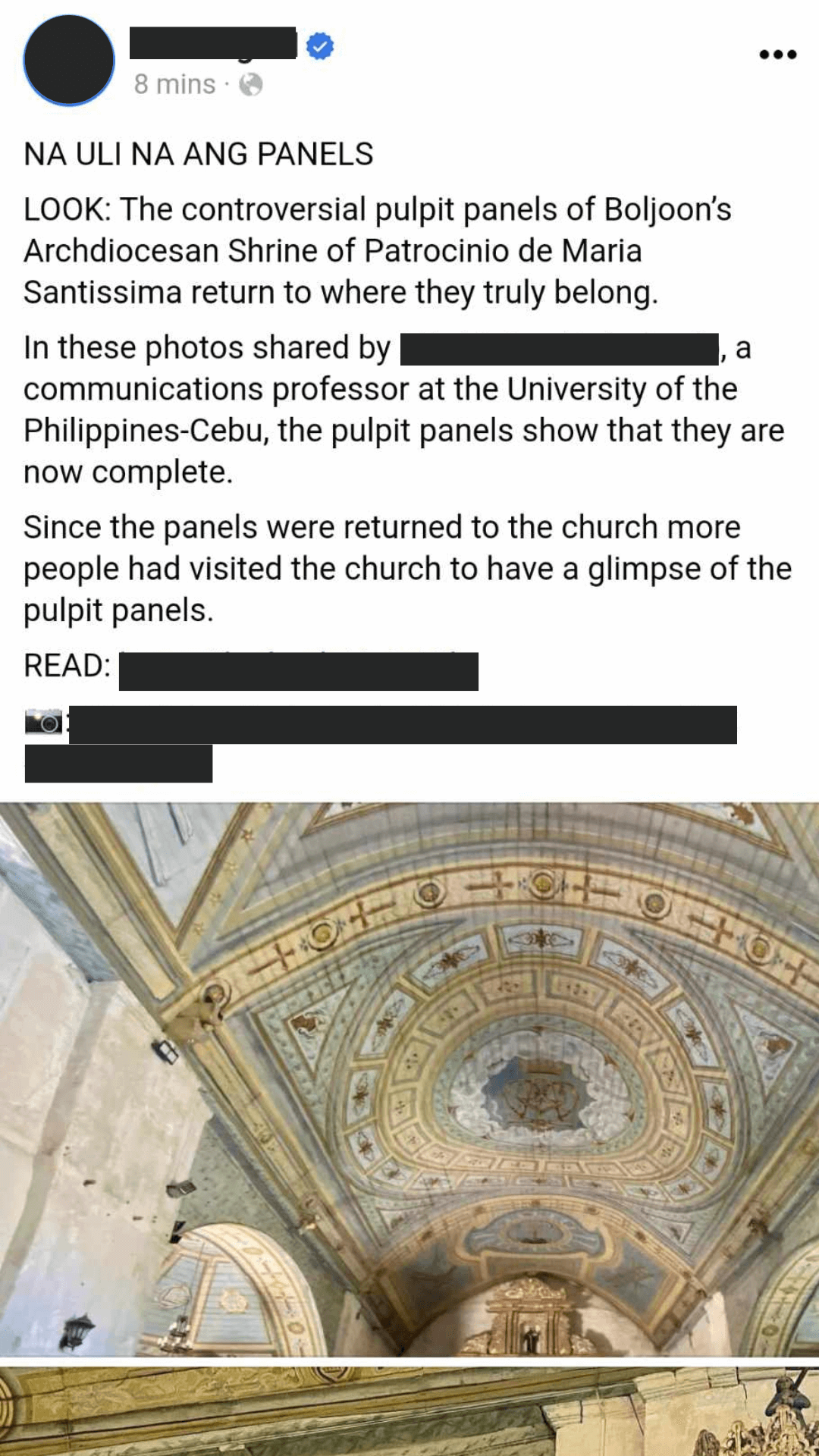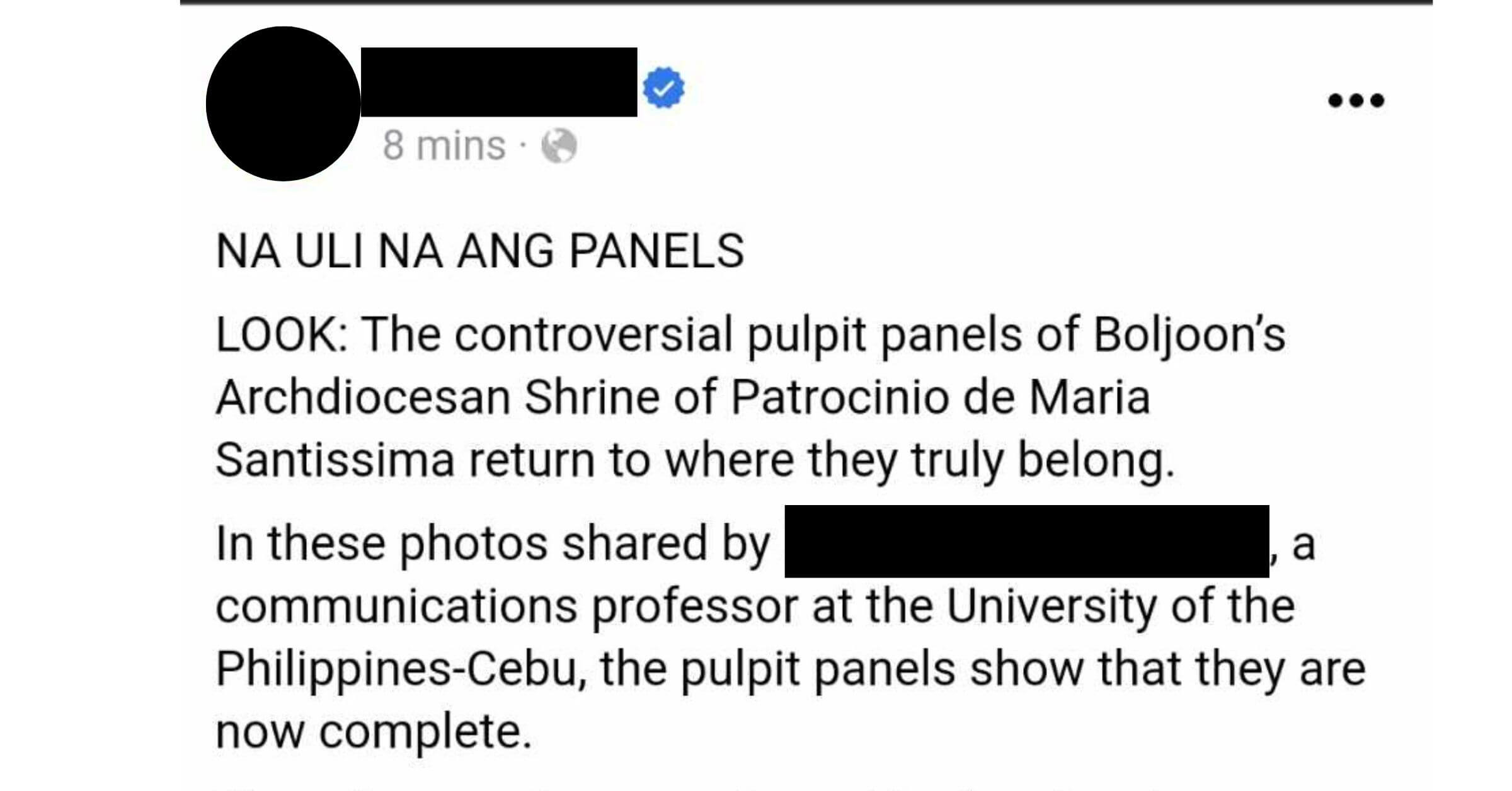The Facebook messages came one after the other, “is this true?” By this, those who contacted me meant a report yesterday by a local news outfit about the return of pulpit panels stolen from the heritage church of Boljoon that emerged after decades of being lost as donations to the National Museum of the Philippines.
“NA ULI NA ANG PANELS,” the page headlined its update. (The panels have been returned.)
Accompanying the post were photos taken by a mass communications teacher who was part of a group that went to southern Cebu for a departmental conference.
And here’s the puzzling if not worrying part, the teacher only captioned her post with “Good morning, National Museum of the Philippines,” tagging the NMP’s official Facebook page. From that uncontroversial update, the publication extrapolated the following details: 1) the panels have been returned, 2) they are now complete, 3) more people have been visiting the church to have a glimpse of it.
(NOTE: I am not naming the publication and the people involved. As pointed out in a recent conference on media councils, media often loathe being criticized and many local journalists already hate my guts for daring to point out errors and misdeeds. While I may be vocal on social media, many corrections I send via private messages and these are then edited by the publication involved. I just blog about the egregious cases.)

The Facebook update on the panels betrays the lack of verification in the process of sourcing a social media post and reporting it as news. This is unfortunate but expected. Deep cuts in the newsroom have resulted in the disappearance of news beats. It is in news beats that you see reporters with deep knowledge about and close monitoring of a certain sector covered by the media. Had there still been a church or heritage beat, the reporter there would have known that the details in the post were false.
With newsroom cuts, there are also fewer people around to verify and edit updates. They could have contacted Boljoon officials who are very accommodating.
Calling the Boljoon parish church wouldn’t get them anywhere. The parish priest, who is a friend of a friend, ignored all calls and messages to ask about the issue. He even asked staff not to cooperate with journalists asking about the panels.
The biggest error in the Facebook post was the report that the panels were returned. The four panels are still with the National Museum of the Philippines and while there is a “commitment to return,” the NMP leadership has final say and the question on its ownership has not yet been resolved.
The update also betrayed the lack of knowledge that replicas were made, installed, and then unveiled to much fanfare in 2020. A heritage expert described the resin copies to me as “of poor quality” but then requested not to be quoted.
But even if the 4 panels were returned, it still wouldn’t be complete. One panel remains unaccounted for and may have disappeared sometime in 2005-2006. The one holding it now is feeling pressured, I was told.
But the worrying detail in the post is the claim that more people have been visiting the church to view the panels. By all indications, this detail was just made up.
The post has since been deleted. The publication made up for the faux pas by featuring Boljoon as a Holy Week destination. It referenced the deleted post as an “oversight.”
Max is a journalist and blogger based in Cebu. He has written and edited for such publications as The Freeman, The Independent Post, Today, Sun.Star Cebu, Cebu Daily News, Philstar Life, and Rappler.
He is also a mobile app and web developer and co-founded InnoPub Media with his wife Marlen.


Leave a Reply